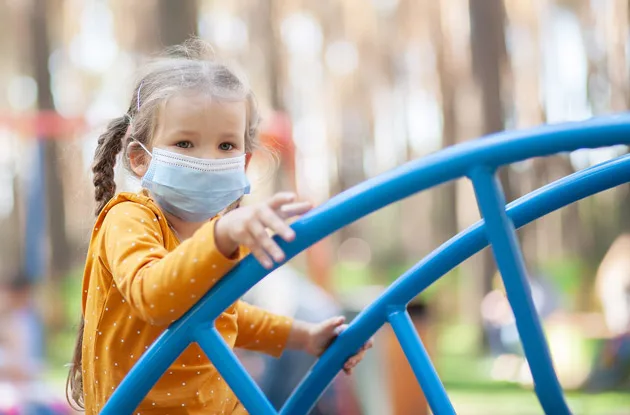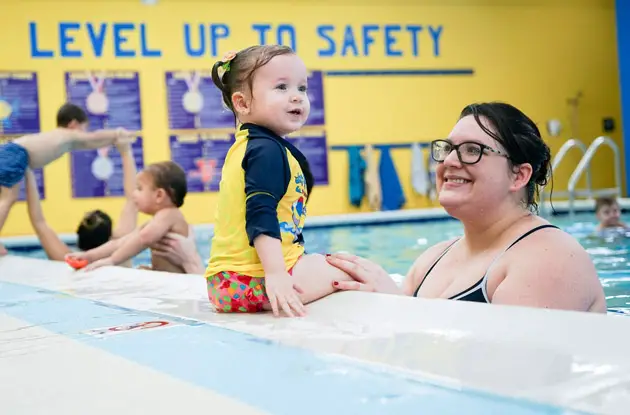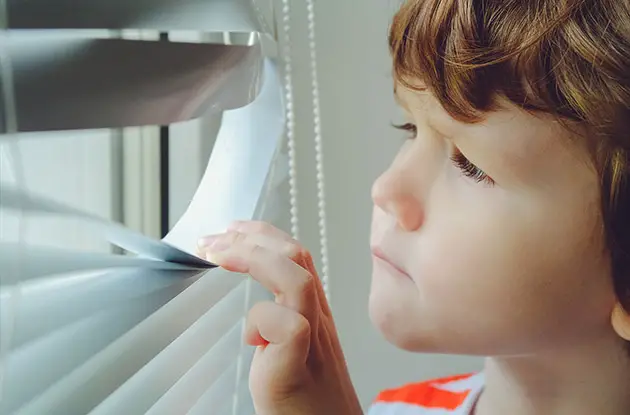Riding the bus, walking to school, and more milestones of growing up: a guide to when your kids are old enough to do activities on their own
After years of knowing your child’s exact whereabouts, who he is with, and what she is eating, it can be daunting, even scary, to ease your child into independent activities. But there will come a time when you will have to give your little one wings to fly—or at least, money to take a train somewhere.
“A parent’s confidence in a child’s age-appropriate abilities to make good choices and be responsible goes a long way to instilling confidence in the child and provides a much-needed inner resource that would benefit any kid,” says Jody Ripplinger, MA, LMHC, a psychotherapist at Manhattan’s Citron Hennessey Private Therapy and a Brooklyn mom of three. “I think the real test is whether we as parents feel able to let our children out of our sight for periods of time, without letting our anxiety get the better of us.”
We rounded up some of the big firsts and offer advice on when you might expect your child to be ready for them. Of course, you know your child best and every person and situation will be different, but we hope this helps you figure out when it’s okay for your child to take some big steps on his own.
Getting a Cellphone
It may seem like your child has been begging for her own phone for as long as she’s known how to talk. Most experts agree that kids should have phones once they start going out and about on their own, whenever that may be. Pre-paid, no-frills, functional phones just for calling in to the mothership, and vice-versa, are fine. “We gave our kids cellphones once they started traveling alone, so it was around the age of 9,” says Alina Adams, a mother of three and author of Getting Into NYC Kindergarten. “But these phones are for announcing that they’ve arrived at their destination only. And the very, very cheap phones we got them can’t even download apps.”
Attending Sleepaway Camp
Experts we spoke with suggested 7 years old as the minimum age for sleepaway camp. Before you enroll, take into consideration your child’s prior response to separations, if he’s already successfully experienced a few nights away, whether friends are attending the same camp, and what the child’s expectation is, says clinical psychologist Joe Taravella, Ph.D., clinical assistant professor at New York University School of Medicine. “The average age for a first trip to sleepaway camp ranges from 7 to 9 years old, but it really depends on your child’s maturity and ability to separate from parents.”
Some kids will dive in and others may beg to come home, so find out how the camp handles homesickness. “Sleepaway camp presents a wonderful opportunity for your child’s growth,” Dr. Taravella says. “Children feel part of a community and develop self-respect, maturity, self-esteem, independence, and responsibility.” They can also learn new coping skills and strengths, become more resilient and resourceful, and cultivate life-long friendships.
RELATED: Find a camp for your child
Going for a Bike Ride
Developmentally, children ages 8 and older should be able to take a bicycle out for a spin around the block by themselves if they are familiar with the neighborhood. A 10-year-old should be able to go out on longer rides accompanied by a friend, as long as they practice safety rules, Ripplinger says. There is a lot to pay attention to, so a child must be able to keep track of the environment around her while moving quickly on a bike. “Make sure he knows how to stay safe,” Ripplinger says. “Tell him to always wear a helmet, always stop at corners and wait for the green light, and be on the lookout for turning cars on the green when it is time to cross.” In New York City, kids can legally bike on the sidewalk until they are 12, and she recommends that they do. A cellphone, and assuring the child that she has your trust, helps.
RELATED: How to choose a bike helmet
Riding the Bus or Subway
Some parents are comfortable starting kids young, yet some transportation systems have established minimum age requirements for unaccompanied minors. Metro-North Railroad and Long Island Rail Road require kids to be at least 8, while Amtrak’s minimum is 12. “Additional factors to consider could include your child’s desire to ride alone, history of demonstrating responsibility and good judgment, and ability to follow directions as well as the length of the trip and/or the safety of the route,” says Amy DiBernardo, LMSW, clinical assistant professor in the department of child and adolescent psychiatry at NYU Langone Medical Center’s Child Study Center.
In preparation, go for a trial run, review subway and bus maps, and walk the route to the train or bus to point out places the child can go for help if needed along the way. Discuss safety concerns and how to identify police officers and security guards. DiBernardo says to send them with, an “emergency kit” that includes contact information, a cellphone if they have one, and additional money ($5-$15) in case a their pass, MetroCard, or ticket gets lost and your child needs to use another form of transportation.
Crossing the Street
National Highway Traffic Safe Administration says children are not ready to cross a street alone until 10 years of age, according to Dr. Taravella. Your child’s readiness depends on the ability to shift attention and also concentrate. “Children who tend to be impulsive and easily distracted can engage in unsafe crossing choices and other unsafe behavior,” he says. “Parents can reinforce judgment skills by walking with their children and always modeling safe pedestrian behavior for their children, such as not crossing the street when you don’t have the right of way or stopping at the curb and looking in all directions when crossing the street.”
Walking to School
Once children reach fifth or sixth grade, they might be ready to take the leap with their friends or by themselves, Dr. Taravella says. Some children initiate the conversation by asking their parents if they can walk alone or with their friends. “Parents should evaluate the distance to the school, how many streets to cross, the availability of crossing guards, and their child’s ability to navigate the streets safely to and from school,” he says. They’ll need coaching on continuously taking the safest route between school and home, and they should demonstrate for their parents that they have excellent traffic-safety skills.

Not every child is anxious to go it alone. “My middle child was uncomfortable with the idea of going to school by himself,” Adams says. He was accustomed to traveling with his older brother, who moved on to a new school, but Adams had to take her younger daughter to school in a different direction, so she started him walking alone at 10 years old. “He was anxious, but he did it anyway, and has had no problems since,” she says. “He did not feel he was ready, but I did.”
Going to the Mall
“Dropping a child off anywhere alone definitely depends on the maturity level of the child, but I would say age 11 or sixth grade should be fine for any child with a friend, as long as the parent knows and trusts the friend,” says parenting coach Elisabeth Stitt, author of Parenting as a Second Language.
Parents may be more concerned about kids being loud and disrespectful than being harassed, so avoid letting them go in large groups or trios. Pairs make for a better buddy system and less chance of fighting. Give kids a primer on safety and strangers. Limit money to just what they need, and outline your no-go zones. “Video arcades are good places to avoid until kids are a little older,” Stitt says. “They tend to be dark, and kid-to-adult ratio favors kids, which allows for more room for kids to behave obnoxiously and for peer mentality to develop. Places such as skating rinks, on the other hand, although kid-heavy, invite less trouble.
Studying at the Library
You can start dropping them off at the library by themselves around ages 11 or 12, according to Danielle Lindner, children’s book author and founder and CEO of the London Day School in Florham Park, NJ. Start by accompanying your child but spending time in separate areas so that he knows where to find you if needed. This offers freedom without you being right on top of him. “As they get older and become more comfortable, demonstrating that they can be responsible, you can slowly give them more and more freedom to walk places with a friend or spend time with friends without adult supervision,” Lindner says.
The other factor is library location, she adds. “If visiting the library means walking through an area that would generally be thought of as unsafe, I don’t think there is any age that a child should be able to walk alone in that case.”

Staying Home Alone
Opinions on when kids can stay home by themselves are wide ranging. “Trusting your child to stay home alone, especially the first time, is daunting for any parent,” DiBernardo says. “While concerns are warranted, allowing your child to stay home alone can have real benefits. It fosters a sense of responsibility and independence in your child and may help strengthen your work and life balance.”
The decision depends on your child’s maturity and the situation: Is it a safe neighborhood, is there an alarm system, are there friends and family nearby? “Generally speaking, between the ages of 10 and 12 is an acceptable age range to leave your child home alone for a short period of time (an hour or so), provided that your child is not scared and you believe they are mature enough to handle the situation,” DiBernardo says.
Visiting the Doctor’s Office
Going solo to the doctor can encourage self-care as well as more honesty with the physician. “Children can come into the office at 13 years old by themselves,” says Mary Ellen Renna, M.D., a pediatrician in practice in Jericho and author of 10 Steps to Almost Perfect Parenting.
Even if you are there, stay out of the exam room. “It is always better to see a teenager without the parent present,” Dr. Renna says. “They are more likely to be forthcoming about sexual behavior or drug use if the parent is not in the room.” It’s different when a child is sick, because it is always better to have someone with you when you are ill. “Sick visits and emergencies should be accompanied by a parent as often as possible,” she says—unless the child is older than 17, drives, and is physically able to drive to the office.
RELATED: Find a doctor near you
Signing Up for an Email Account
Let school be the lead and find out if there is an age or grade in which they require students to have their own email, or if the school assigns email addresses to everyone. “Kids don’t really need one,” says Richard Rende, Ph.D., a developmental psychologist and co-author of Raising Can-Do Kids: Giving Children the Tools to Thrive in a Fast-Changing World. “Keep in mind that all kids—including and especially teens—can be impulsive and emotional and that plays out socially. So think about an age when you feel they are mature enough to use it responsibly—early teens—and teach them the rules of the game.” This applies also to texting, which kids probably do more frequently, he adds.
Getting on Social Media
Early teens is probably the right time for most kids to start entering the social media world, but this may require a long period of monitoring, Dr. Rende says. “It will be a learning curve for kids because now they have a device that permits instantaneous expression of moods, kids will say things about other kids, misinterpretations can happen.”
There are many different kinds of social media kids may delve into, so parents should take a proactive stance in learning about them and teaching safety tips. Parents should also be aware of the different minimum ages set by the individual networks for membership. “Practice transparent monitoring—not constant surveillance or lurking,” Dr. Rende says. While teaching good online protocol, hang on until you think they are ready to truly go solo. “You will need to practice good communication skills with your child and partner with them.
RELATED: Teens & Social Media
Tips to Determine Your Child’s Readiness
Start in small increments, do trial runs, and try role-playing. Additionally, ask yourself whether your child has:
|





















